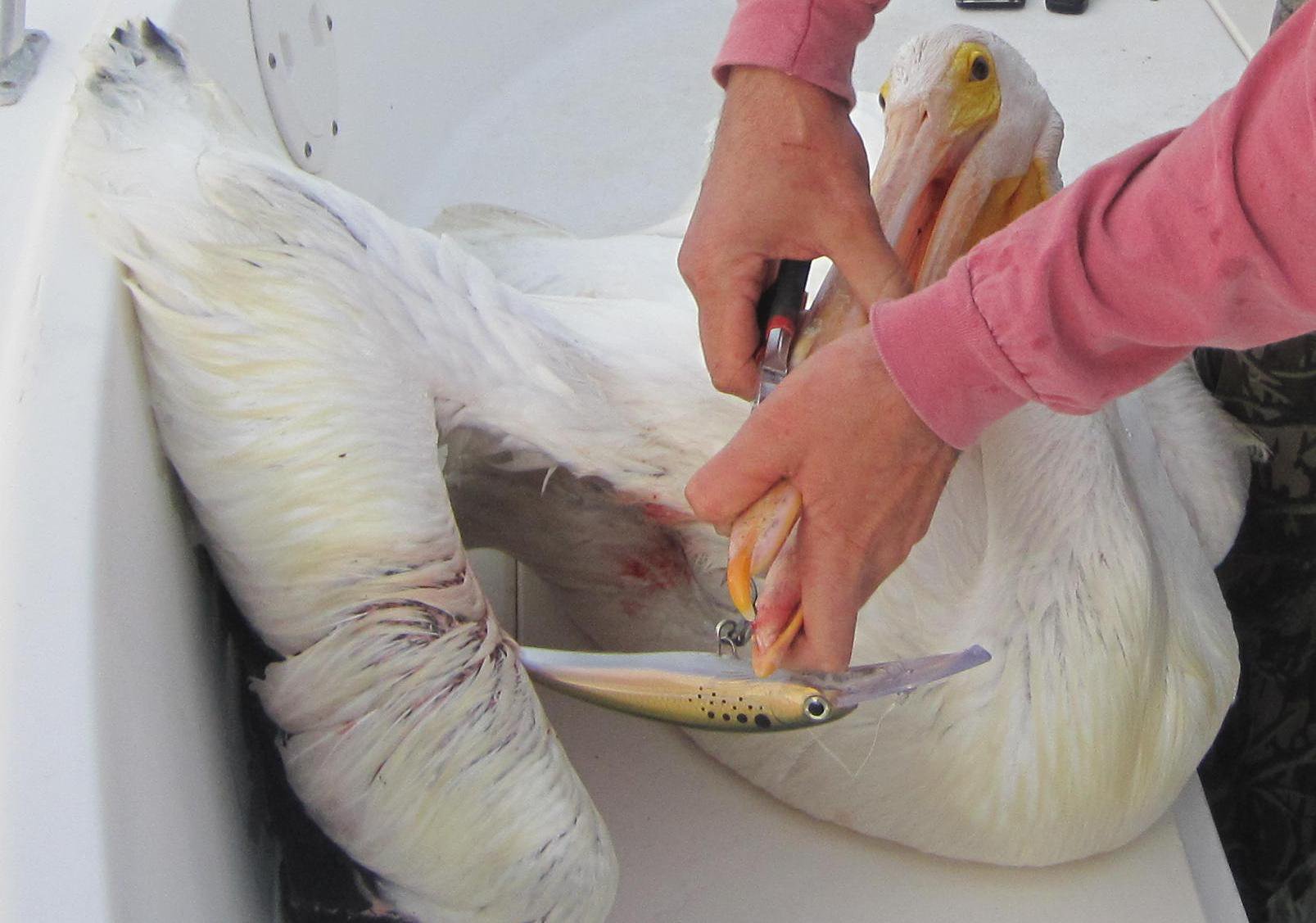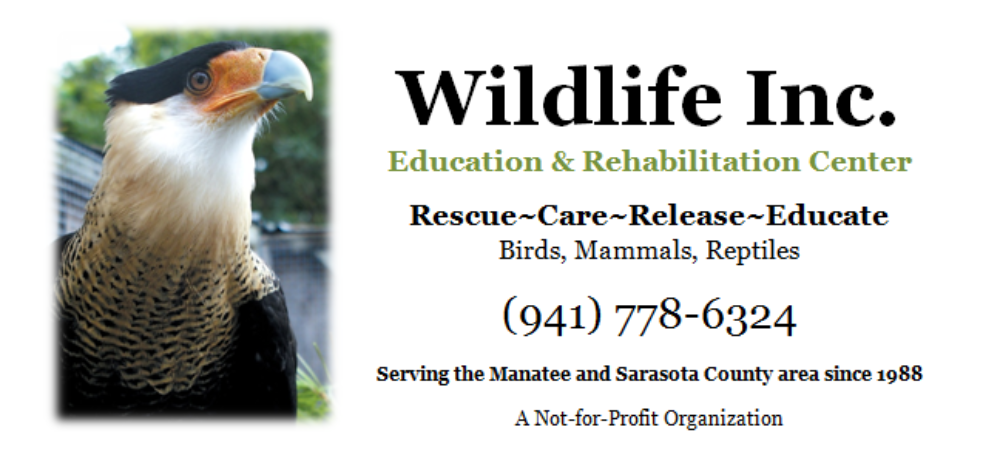
When You Find Wildlife
Injured animal or bird
What to do?
- BE CALM. Do not scare a partially mobile animal into an area where it is difficult find. Remember it is afraid of you and wants to survive alone.
- Observe from a distance until you have determined what kind of animal it is, if it is in deed injured, if possible what type of injury (leg, wing, head, etc.), and you know how you will handle it.
- CALL a wildlife rehab or rescue service, if possible, before picking it up. Specific information can prevent injury to you and/or further injury to the animal.
What is it?
- Most people can identify most mammals. Note the approximate size to give when calling a rehabber.
- Birds are a lot more difficult to identify. A flyable juvenile is the same size as the parents with very few exceptions. Some things to take note of are:
- The relative size, smaller, equal or larger than a song bird. Most shore birds are much larger.
- It’s general color, other colors and their location or arrangement, i.e. spotted, bars, stripe, yellow breast, etc.
- The leg length and color.
- The beak length, color and shape. It comes to a point, has a small hook, looks like a hawk, etc.
- Anything else you might notice to identify with.
Who do I call?
- First, you must seek someone having proper state and federal permits to treat wildlife. You are permitted to have the animal or bird in your possession only while you are actively seeking help.
- In the Bradenton or Sarasota area call Wildlife Education and Rehabilitation Center Inc. 778-6324.
- For other areas of the country:
- Locate your local nearest rehabilitator in advance and note their number in the back of your phone book.
- You can ask for a wildlife rehabilitator from city or county animal control service, county sheriff, state wildlife service, US Fish & Wildlife service, and some pet stores and pet shelters may be able to direct you.
- NOTE that veterinarians must also have a permit to rehabilitate wildlife and most do not. However, they may be able to help you find a rehab center.
How do I handle it?
- Remember a few things such as animals with teeth bite HARD, feet will scratch, any beak can break skin, long beaks (such as shore birds) KNOW to poke your eyes, hawks and owls can bite hard but the feet are much worse.
- Once contained in a basket or box keep it in a warm, dark and quiet place. Stress (or shock) is harmful and may cause an animal or bird to loose its ability to maintain body temperature well. Darkness will lessen the stress.
- Do NOT handle it or let children keep opening the box. Stress is not usually recognized by one who is untrained but it’s there. Stress can kill.
What do I give it (put in its mouth)?
- Food, NONE. Water, NONE.
- Anything you have found can go several hours without food or water and some can easily handle a day or more without hurting it. Remember wildlife is very different from domestic animals and birds. If you must have it over night, it will probably be sleeping.
- It is normal for an animal to fast when injured. With some injuries, putting anything in the digestive system can kill it, and if solid food is given to a starving animal, it will likely die. It’s better to be safe than over react with food and water.
Orphaned Wildlife
What animal or bird is it?
- Identify before doing anything. Is it actually an orphan or an abandoned nest? This is a common mistake. There are many situations you may encounter. The following are only the most common.
- When you find an apparent orphan, first identify it. It may have been left behind by mother or have parents a short distance away. Or it may not be an orphan at all, that is, already weaned.
- Animals roam around while growing, birds do very little, if at all. Some baby birds will spend their last few days before achieving flying ability on the ground, while being feed by the parents. Otherwise, birds are fully grown before leaving the nest, with few exceptions. If a bird is fully feathered, it is adult size.
- Some animals leave their young hidden while away feeding themselves. Good examples are deer and rabbits.
- Parent birds will feed their chicks, after falling from the nest, while on the ground. These may be put back in the nest, on a branch or in a basket attached to the tree. We can help you with some information by phone.
CAUTION! Do not approach a large, downy covered chick. Birds of prey frequently fall from nests and the parents WILL attack. Maintain a safe distance and CALL for help.
